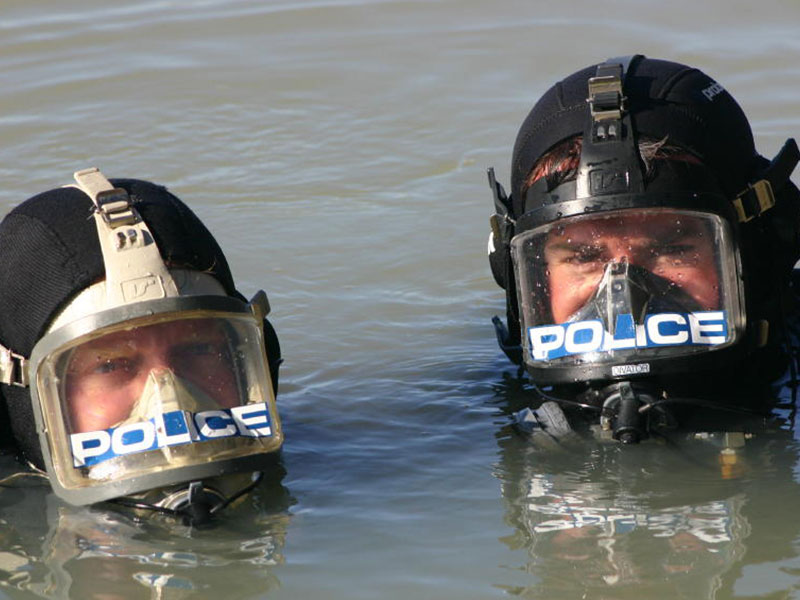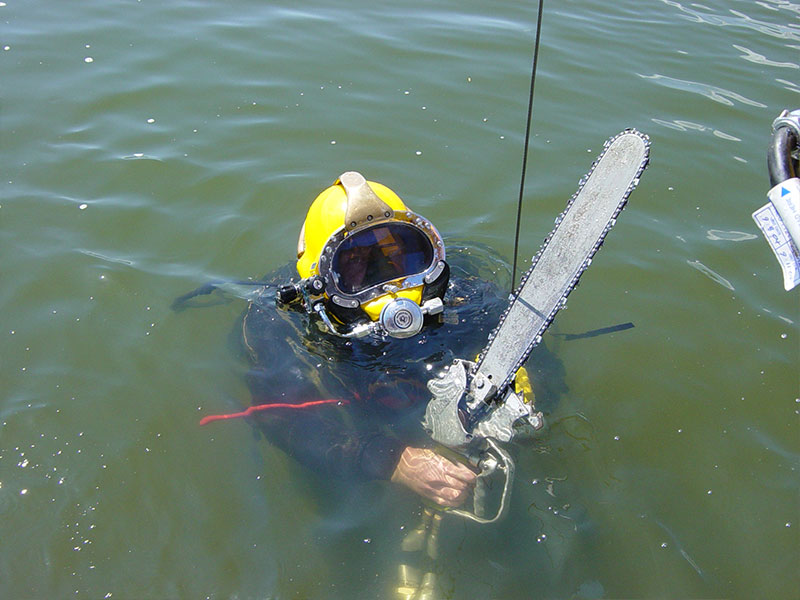Course Overview
The Atmospheric Diving System (ADS) training course is intended to train pilots and supervisors in the safe operation and maintenance of the ADS and to provide a sufficient amount of experience and knowledge to qualify the pilot or supervisor to undertake field operations.
The program provides a safe and supervised environment where pilots can be directed and corrected in technique and understanding. The duration of the course allows students to identify individual constraints in operating the suit and develop personalized corrective action. During the course structures and framework will be added to simulate the real working environment. In training course specific to a job, training will simulate the real tasks that will be encountered during operations.
Course Standards
This course meets the requirements of:
- AODC 022 Code of practice for the operation of manned submersible craft.
- ADS Pilot: Partial completion of Certificate IV in Hyperbaric Operations (Atmospheric diving system). National Qualification Code: 11006NAT.
- ADS Supervisor: Certificate IV in Hyperbaric Operations (Atmospheric diving system). National Qualification Code: 11006NAT.
Note: If you study at an ADAS training establishment outside of Australia you may not be eligible for this Australian Qualifications Framework certificate. The ADAS licence, however, is issued at all ADAS training establishments.
- All ADAS schools teach to the ADAS standard, this means that graduates of non-VET accredited schools may apply to ADAS for a VET qualification through a Recognition of Prior Learning (RPL) process. Contact ADAS for more information about this process.
Student Prerequisites
ADS students must be able to fit into the ADS and perform all necessary movements. They must also meet the following pre-requisites:
- Hold a Hyperbaric Operations certification OR relevant industry experience
- At least 18 years of age
- Ability to control Starboard and Port electronic panels and life support controls quickly and efficiently
- Ability to remove arms from arm limb assemblies in a timely manner
- Be of a physical stature that fits within the sizing criteria
- Provide a relevant medical certificate ensuring the pilot is safe to dive
- Be able to operate all jettison systems including umbilical cutting and jettison, thruster cable cutting and jettison
- Demonstrate psychological fitness for the position, through aptitude testing
- Current offshore medical
- Hold either a recognized current Diver Medic Technician certificate or a current First Aid certificate from an accredited training organization (ie: has been certified within 3 years of the conclusion of the proposed training program) and CPR and oxygen resuscitation skills must have been refreshed within the 12 month period prior to the conclusion of the training program. The student’s First Aid qualifications must meet the competency requirements of AS/NZS 2299.1 Occupational diving operations standard operational practice.
Competencies
The following units of competency are included:
ADS Pilot
- BSBWHS211 Contribute to health and safety of self and others
- NAT11006001 Work safely in hyperbaric operations
- NAT11006035 Undertake launch and recovery operations for hyperbaric operations equipment
- NAT11006047 Operate a personnel and materials hoist in hyperbaric operations
- NAT11006048 Prepare and maintain atmospheric diving system equipment
- NAT11006049 Perform work tasks using atmospheric diving system equipment
- NAT11006065 Apply knowledge of basic physics, anatomy, physiology and psychology to hyperbaric work
- NAT11006072 Participate in undertaking work under a permit to work system
ADS Supervisor
- BSBWHS211 Contribute to health and safety of self and others
- NAT11006001 Work safely in hyperbaric operations
- NAT11006002 Maintain effective working relationships within dive or hyperbaric operations team
- NAT11006035 Undertake launch and recovery operations for hyperbaric operations equipment
- NAT11006047 Operate a personnel and materials hoist in hyperbaric operations
- NAT11006048 Prepare and maintain atmospheric diving system equipment
- NAT11006049 Perform work tasks using atmospheric diving system equipment
- NAT11006065 Apply knowledge of basic physics, anatomy, physiology and psychology to hyperbaric work
- NAT11006072 Participate in undertaking work under a permit to work system
- BSBWHS308 Participate in WHS hazard identification, risk assessment and risk control processes
- PUACOM001 Communicate in the workplace
- PUATEA001 Work in a team
- PUAOPE013 Operate communications systems and equipment
- PUAOPE015 Conduct briefings and debriefings
Delivery & Assessment
Theory covers top level understanding relevant to the physical operations of the ADS and the understanding of resources available to assist in ADS understanding.
During the practical dive sessions the pilot trainee is expected to perform a number of tasks that reflect situations and operations that may be encountered in the field. Pilots require approximately 20 hours to learn basic skills and become proficient with suit life support and flying functions to allow them to focus on the work tasks. Students are introduced to the tooling with emphasis on job preparation, planning, and tool modification required for use with the ADS.
During open water dive sessions the pilot trainee is expected to perform a number of tasks that reflect situations and operations that may be encountered in the field. Courses may be tailored for military sub-rescue, salvage, inspection and non destructive testing, or typical oilfield construction.
The following are examples of typical tasks which will be completed by students and tracked within the course:
- Sizing up and buoyancy set up
- Overall operating procedures in water exercise
- Overall emergency procedures in water exercise
- Climbing umbilical (power loss, entrapment)
- Emergency jettison systems
- Flying in and around structure
- Giving set of life support system readings while hovering
- Through-water communications protocols
- Rigging preparation
- Rigging work
- Connecting umbilical to down line
- Shackle work on bottom and mid water
- Carrying weight
- Pneumatic tool use
- Hydraulic tool use
- Subsea Measurement
- Tool basket management
- Lift bag use
- LARS operation (Optional)




